The “Limited Edition” 4K Ultra HD and “Limited Edition” Blu-ray sets are currently available from Arrow Video.
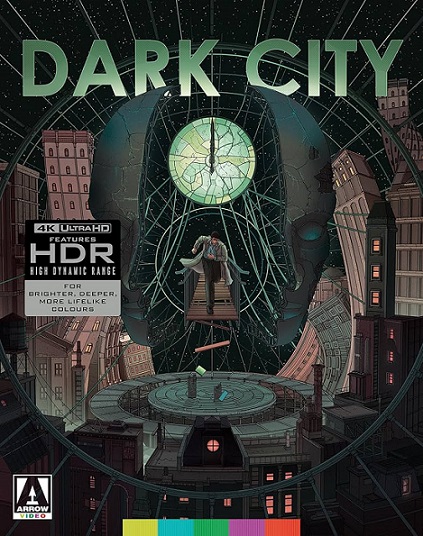
Back in the day when I was young, I went to the theater and watched the science-fiction feature Dark City from filmmaker Alex Proyas (The Crow). I’ll admit that while I adored the look of the picture and found it interesting, it didn’t initially make a long-lasting impression. However, over the years critics began to laud the film, and a “Director’s Cut” eventually arrived on DVD a decade later. I missed that release, thinking that the changes couldn’t possibly have altered the first dramatically.
Arrow Video is now releasing a 4K Ultra HD “Limited Edition” of both the theatrical and director’s versions of the title (along with a “Limited Edition” Blu-ray too). After revisiting the movie and seeing both versions of the movie in 4K Ultra HD, my opinion has changed. First off, the extended, filmmaker-approved cut is vastly superior to the version that played on cinema screens in 1998. This is a very good effort and one can see how its fanbase has continued to grow over the years.
The story begins with an amnesiac named John Murdoch (Rufus Sewell) waking up in a tub in a hotel room. A phone rings, he picks up to hear the voice of Dr. Daniel Schreber (Kiefer Sutherland), who tells him to leave immediately. Murdoch flees into the city and is pursued by a pale group of threatening men in dark coats. The lead learns that several prostitutes have been murdered and that he is the prime suspect in the slayings. He finds his way home to wife Emma (Jennifer Connelly) in the hopes of her jogging his memory, but they are interrupted by police inspector Frank Bumstead (William Hurt), who is ready to make an arrest. Murdoch then has a vision of a beach that he attempts to find, and begins to discover that he possesses unusual powers. He also notes that at a certain point in the perpetual night, everyone falls asleep and elements of the city change. As the story reaches its climax, we learn whether or not the lead is a madman and what exactly is going on in this strange environment.
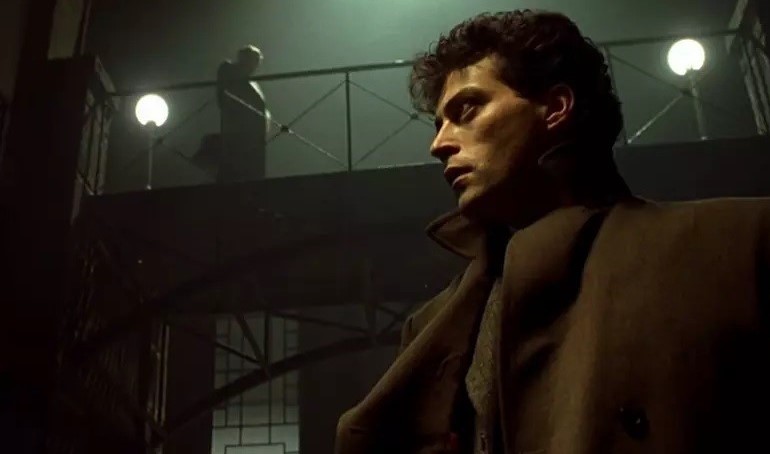
In the original cut, the opening narration bluntly details much of what is occurring, and so it’s just a matter of following the lead as he solves everything himself. This was always something of a problem for me, as it removed a great deal of intrigue and tension from the story. The director’s cut gives the viewer the same amount of information as the confused protagonist, quickly involving us in the mystery around what’s going on. Since it had been so long since I had originally seen the picture, I had forgotten the major twist. Everything seems far more engaging and interesting in the director’s version because of the slow reveal of information. Additionally, there are more character moments that develop the characters and their unusual relationships further. Coming in fresh again, it’s clear that this longer cut is the definitive edition.
Still, regardless of which version you prefer (and you can watch either in the set), both versions look incredible on this release. The movie boasts huge sets and streets filled with film noir, art deco, as well as other elements that give it a striking appearance. This Arrow Video release provides a 4K scan of the 35mm negative for the theatrical cut. Additional bits from the director’s cut are from a 2K master and these scenes have been inserted and upgraded to 4K resolution (approved by the cinematographer). It is all presented in Dolby Vision and will wow viewers.
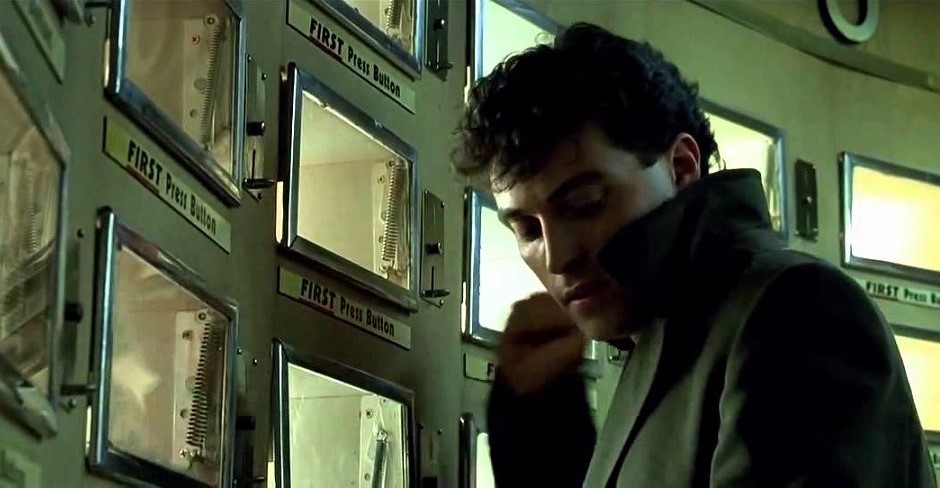
This movie looks better than it ever did in the theater. Every shot is wonderfully clean and the backgrounds really pop. This includes the Automat location, as well as the city environments, and the hidden world of figures in black coats. The cityscape moves every so often, resulting in more incredible visuals that remind one of the later title Inception. When Murdoch is pursued by the villains as art deco streets during these changes, the results are spectacular.The quality of the disc really highlights the stunning cinematography by Dariusz Wolski (The Crow, the original Pirates of the Caribbean series, Prometheus, The Martian).
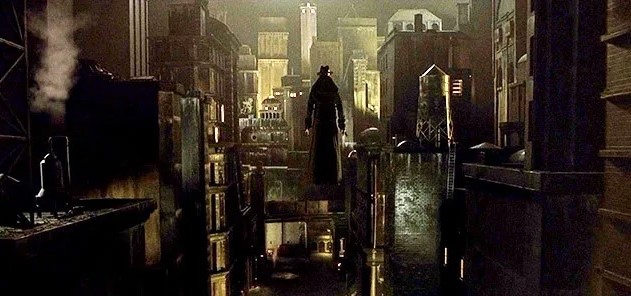
Thematically, there’s a lot going on too, with repeated motifs like spirals and mazes, as well as themes addressing the idea of self and existence. There’s a lot going on and the script is vague enough that various analyses and meanings can be drawn. In fact, as the bonus features clearly point out, many critics have different theories and ideas about the themes and what it all means to them.
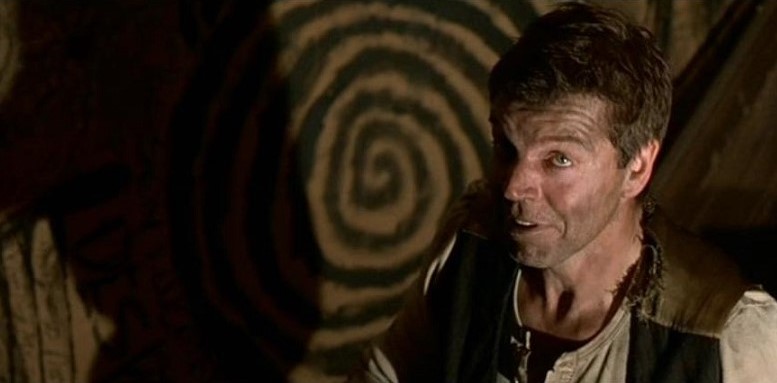
Not all of the visual effects have aged perfectly, but in general, the director’s cut is a beautiful-looking film with incredible detail, the cast are all excellent, the mystery is interesting, and there is enough subtext to keep one pondering it all after the credits roll.
The extras on the disc are equally fantastic. There are five commentary tracks on the director’s cut disc alone. Those who have previous editions will find all the archival commentaries included. One is with director Proyas, another features the screenwriters, and a third is with late film critic and devoted fan of the picture, Roger Ebert. All are interesting and focus on different elements of the production.
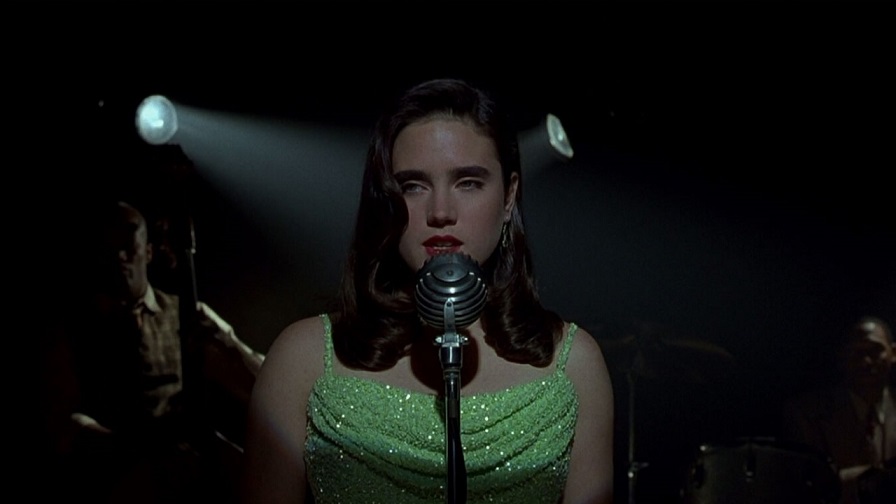
In addition, there is a new commentary with Proyas (as well as an archival introduction to the feature), and a recently recorded movie expert commentary with the Film Versus Film podcast hosts. Proyas is an Australian, as are the podcasters, and the movie enthusiasts share their experiences and reactions seeing Dark City while in college. They share some humorous asides as well as a few differing interpretations of a couple of story aspects.
It’s a fun track, but the highlight is the new material with Proyas. Looking back on the production, he offers more tidbits into its creation and some of his thoughts about the finished film. Proyas mentions that the project was initially called “Sleepwalker” and describes how it evolved after pitching it to various studios (most of them turned it down). He explains some of the alterations film executives insisted on after turning his cut in, and offers interesting insight into his creative choices. Having just come off of The Crow, he wanted no guns of any kind on set, and changed the weaponry of the black coated figures. While a revolver needed to be used in one scene, he avoided using blanks and simply used editing and sound design to give the impression of it going off.
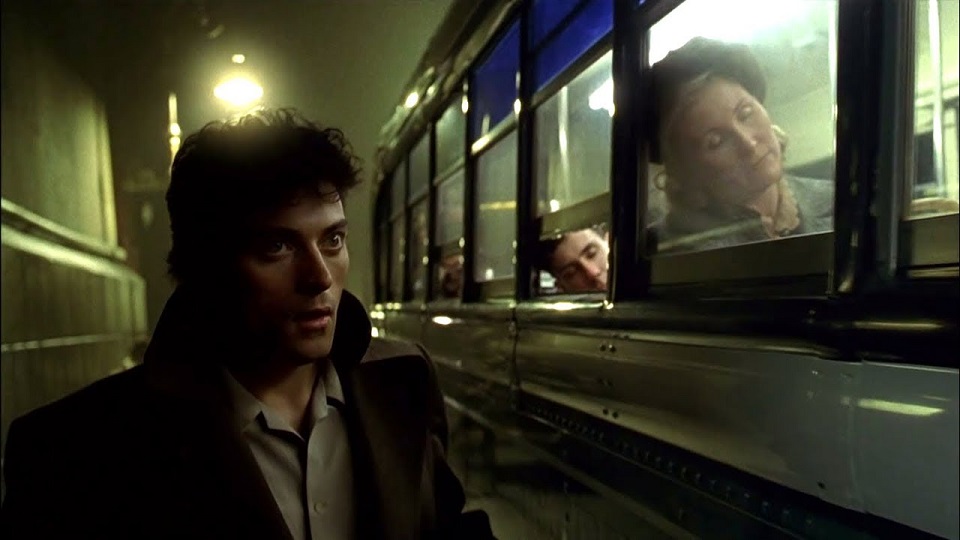
One fascinating bit of trivia the director notes is that some fans have discerned a connection between this title and his 2009 film, Knowing. Proyas states that their theories are valid. He admits the latter film can definitely serve as a loose prequel, as those connections were also in his mind while he was making it. In all, this is an excellent track that adds even more to the wealth of info on previous editions.
There is also a wonderful, new hour-long retrospective on the movie with director Alex Proyas, producer Andrew Mason, production designers Patrick Tatopoulos and George Liddle, costume designer Liz Keough, storyboard artist Peter Pound, director of photography Dariusz Wolski, actor Rufus Sewell, hair & makeup artist Leslie Vanderwalt and VFX creative director Peter Doyle. They give a lot of detail on the shoot, talking about the massive Australian studio takeover and working extended hours in a dark interior for weeks on end (only to come out into darkness at the end of a day’s shoot). Everyone appears to have gotten on very well, with Sewell spending a lot of time with Sutherland off-set and, amusingly enough, trying not to get themselves into any trouble. A visual essay regarding the use of mazes in the film is interesting, as is a second piece on the use of film noir elements in the movie and the general look of the picture.

And, if you go onto the theatrical cut, you will hear a separate archival commentary including snippets of director Alex Proyas, writers Lem Dobbs & David S. Goyer, director of photography Dariusz Wolski and production designer Patrick Tatopoulos. There is a 2008 making-of that details the shooting and a 2008i special featuring five critical perspectives on the movie, its themes, and what they think it all means.
Trailers and other publicity materials are also included in the set.
If that wasn’t enough, the “Limited Edition” packaging contains a 60-page book on the production, newly commissioned cover art, a double-sided poster with original and new art for the film, three postcard-sized reproduction art cards, a postcard from Shell Beach and a business card for Dr. Schreber.
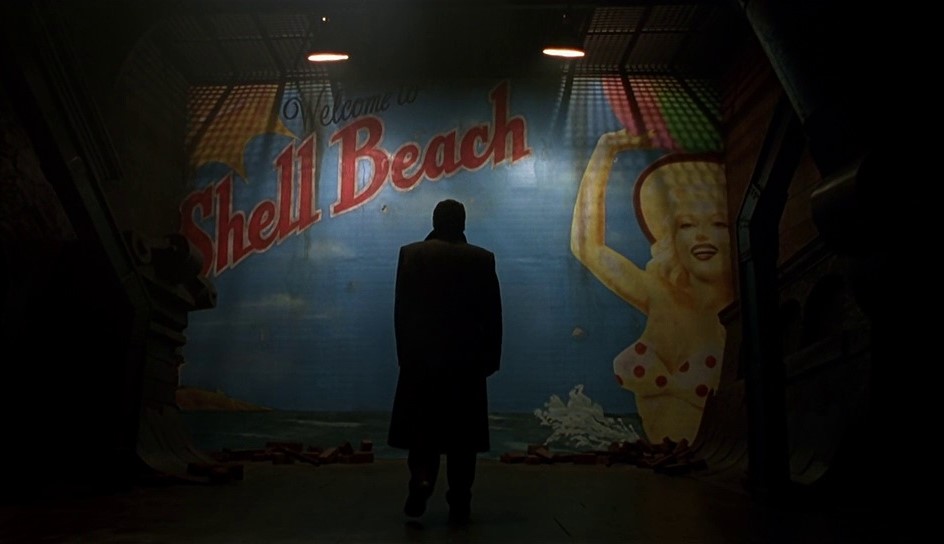
Arrow Video have done a spectacular job with their Dark City “Limited Edition” 4K Ultra HD set (as well as with the Blu-ray edition). The picture is vastly improved and, if anyone out there hasn’t seen the director’s cut, it really is the best version of the film and the best introduction to the story. There are so many extras it’s impossible not to learn numerous new facts about the movie and how it was put together. Anyone who enjoys the film or appreciates science-fiction in general are urged to pick this set up… you won’t be disappointed.


